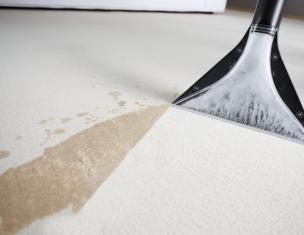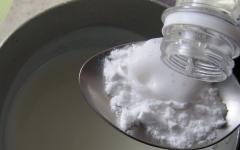Today it is impossible to imagine the interior of a residential building or apartment without ceiling plinths. The plinth covers irregularities in the false ceiling or wallpaper, gaps and imperfections in the walls, and gives the interior completeness. But how to make the skirting board fit perfectly in the most important place - in the corner? There are several ways.
Miter box use
Correctly cut the plinth for mounting in the corner will help the miter box - a special device, which is a tray for cutting boards, plastic, etc. at different angles. The miter box can be bought at the store or made by yourself. Usually a saw is attached to the miter box sold in stores, but you can use your own tool.
The miter box has a recess for a board or plinth to be cut off and saw slots at an angle of 45 and 90 degrees. You will need to cut the baseboard at a 45 degree angle.
To cut a skirting board with this tool, follow these steps:
- We apply the plinth to the future attachment point.
- Mark where we will cut.
- We put the plinth in the chute of the miter box so that the lower part is pressed against the surface of the fixture, and the part that will be smeared with glue “looks” up.
- Cut off the section by inserting the saw into one of the 45-degree holes.
- We correct the cuts with a knife or the same saw (remove irregularities).

After that, the plinth can be glued into place.
How to make a miter box yourself?
If desired, the miter box can be made at home. It can be made from wood or iron. The dimensions of the workpiece do not play a special role, but the wider it is, the more accurate your cuts will be. However, if the width is greater than the length of the hacksaw with which you will cut the baseboards or boards, then sawing will be extremely inconvenient, so you do not need to take a workpiece that is too wide.
First, a transverse straight line is marked in the center of the workpiece. Then, at a distance of 1/2 the width of the workpiece from the intersection of the straight line with the edges of the workpiece, marks are made. Then these marks are connected crosswise, as shown in the figure.

Next, the process of marking the side walls of the miter box begins. Attach them to the already marked base and make marks, focusing on the marking of the base. Then draw straight lines from these marks across the entire wall.

After that, the installation process of the miter box begins. The walls must be attached to the base with self-tapping screws if the fixture is made of wood or chipboard or corners with bolts if it is made of steel. Only after installation in the miter box, cut through the slots for the saw.
After making slits, the miter box is ready. If you have a large volume of work or want to do repairs regularly (on a professional basis), this simple device can speed up the process of cutting skirting boards by 5-10 times.
How to cut a plinth without a miter box?
The easiest way is to draw a future cut line on paper (cardboard, wallpaper), and then, attaching a plinth blank to it, cut it off.
To do this, you must first attach the baseboard blank to the paper and draw two parallel lines that will indicate the sides of the baseboard. Then, using a protractor, you will have to measure 45 degrees and draw a line for the future cut. Then the drawing is used in the same way as the miter box: a workpiece is placed on it and the excess is sawn off along the line.

The disadvantage of this method is that the saw will have to be kept on weight, focusing on the drawing, and not inserted into a pre-prepared slot.
If the angle is not right
Unfortunately, in some cases, the angle between the walls in the room is not straight, but sharp, or, conversely, obtuse. This is due to structural defects that arose through the fault of non-professional builders, the architect's idea, or the result of subsidence of the soil some time after the construction of the building. This is especially common in village houses and cottages.

No miter box or a drawing that replaces it will help in this case, and you will have to do the markup in place.
- Attach the workpiece to one of the walls so that it rests against the other wall with its end.
- Draw a line on the ceiling along the workpiece.
- Perform the same operation on the other wall.
- At the intersection of the two lines, mark the workpiece itself.
- Draw a line from the mark to the corner of the workpiece and cut along it.
- Do the same with the blank, which you will attach to the other wall.
- Glue both blanks; they fit tightly.
External corners
It happens that the room has not only internal, but also external corners, which also need to be pasted over with a plinth (see photo). How to do it? There are also several ways here. The easiest way, as in the case of internal corners, is to cut them with a miter box. The outer joints must be cut so that the side that will be glued to the ceiling is on the surface of the miter box, and the side pressed against the wall is facing the wall of the fixture.
As in the case of internal corners, you can also use the markup "in place", that is, draw lines on the ceiling. Here the technology exactly repeats the one used for internal corners.
You can use wall markings by attaching a blank and drawing a line along its bottom edge (see photo).
If the outer corner is too rounded, you can finish the joint with a knife.

To the point where they converge, a line is drawn straight along the future part of the connection. From the point on the ceiling to the second. The resulting markup will be the line along which you need to saw off or cut off the connecting parts. Using these techniques, you can no longer wonder how to cut the corners of the ceiling plinth.
What tools can be used?
The expediency of using certain tools is related to the materials from which the plinth will be made.
Tab. 1. Varieties of materials and features of their use.
| Variety of material | Material properties, requirements | Tool |
|---|---|---|
| Polyvinyl chloride (PVC) | PVC skirting boards are distinguished by the fact that they are easily damaged when pressed and no longer restore their former appearance, as they are devoid of elasticity. Therefore, such skirting boards cannot be pressed when cutting. | Cut with a construction knife or a hacksaw for metal. A blade or a sharpened kitchen knife is also suitable. |
| Styrofoam | The foam plinth is also not very durable, but it is better than PVC analogues. Crumbles easily. | You can use the same tools as for PVC |
| Tree | Stronger and more aesthetically pleasing than their polymer counterparts, but expensive. | Wood is best cut with a hacksaw, you can use metal, although this way you risk clogging the teeth of the blade with sawdust. A fine-toothed wood saw works best. |
Using factory corners - an alternative to cutting and sawing
Instead of cutting skirting boards, you can use ready-made corners, which are sold in the same hardware stores. In this case, the main plinth can simply be measured and cut in the usual way, at a right angle, and then attached end-to-end with the corner element.

The disadvantage of corner elements is that they are actually and visually larger than the baseboard, which will make the corner noticeable. This can ruin the look of the room. It is also inconvenient to use the corners where the walls do not meet strictly at an angle of ninety degrees. But most of the time they look great.
Conclusion
Thus, cutting corners when gluing skirting boards is one of the most complex and responsible procedures for which it is advisable to use a special device - a miter box - which allows you to cut the skirting board at an angle of 45 degrees. If the angle between the walls is not straight, you have to use manual markings. Cutting tools depend on the material from which the baseboard is made.









